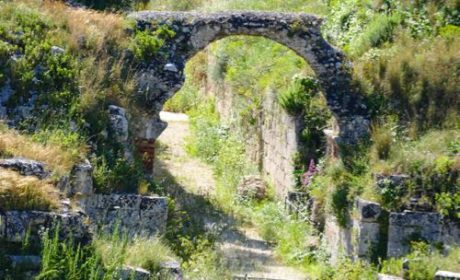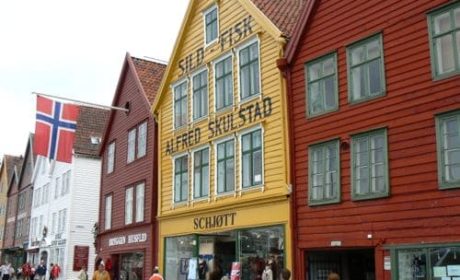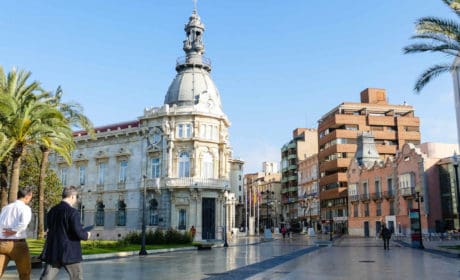On a spring visit to Sardinia, Italy, it’s tempting to look for boomer travel adventures involving the island’s beautiful beaches. Visitors flock to Sardinia for the clear coastal water fringed by white sand.
But, if you spend all of your time on the beaches, you’ll miss the Phoenician and Roman history at the ancient city of Nora, one of Sardinia’s impressive historical sites. And that would be a huge mistake.

Alan and I explored the archaeological site of Nora, when we extended a Silversea Transatlantic cruise on Silver Wind to include a one-week segment traveling from Monaco to Rome. At the port of Cagliari, Sardinia, guests chose between a walking tour of the city, exploring Monte Arcasu by 4×4, or walking the ruins at the ancient city of Nora—our choice.
Table of Contents
Look for flamingos on the bus ride to the Ancient City of Nora
Like many cruise excursions, this one starts with an orientation of the city. The bus drives by Bonaria Basilica, stopping at Monte Urpino so that we can photograph the Gulf of Angels and Parco Molentargius Saline, the winter home of migrating flamingoes.
From our vantage point, it’s hard to see if any flamingoes are still hanging around but the guide points out a few in lagoons beside the road on the 19-mile drive southwest to the Nora archaeological site.
Boomer Travel Tip
MedjetAssist Members who are hospitalized 150 miles from home receive medical transport to a home-country hospital of choice. Memberships from $99.
Stop by the ticket building for a restroom break
Arriving on the Capo di Pula peninsula, the bus parks in a lot near a scenic cove with dazzling blue water. The group walks along a short uphill sidewalk to the ticket building for the Carthaginian-Roman ruins at Nora. There are also restroom facilities and a snack bar.
Admire ancient mosaics

The one-hour guided walking tour—the time is strictly controlled—offers an intimate look at Roman life from the 2nd and 3rd century AD, although some evidence of Phoenician inhabitants (IX and VII BC) and Carthaginians (1st century BC) exist at the ancient city of Nora, Sardinia’s first city.
Our group stops to admire a large section of mosaics that are in need of better preservation. The guide explains that money is lacking to protect them from the elements. As the walk continues along a path that borders a housing district, artisan workshops, and Roman baths, ancient history comes to life.
Imagine Romans attending the theater

Although the Roman theater is but a shell of it’s former grandeur—the venue once had 20 terraces seating 1,000 people—the ruins are still impressive. Alan and I stand in front of the theater imagining Romans arriving on the road from the port (you can still see it) to attend a performance accompanied by a sea view.
Boomer Travel Tip
Need help dressing for a cruise? Be sure to ready my tips in luxury cruise wear for women.
Learn about the temple of Tanit

The Temple of Tanit, from Phoenician times, stands near the Roman theater. Our guide explains that until a storm in 1889 uncovered a cemetery and the remains of the temple, no one knew that a Phoenician world was hidden underneath the Roman ruins.
Excavation in the ancient city of Nora continues
Excavation continues at the ancient city of Nora, with much more to be discovered. One particularly fascinating tidbit—at least it is to me—is that much of the ruins are underneath the sea due to the sinking coastline in this region of Sardinia. If you’re interested in exploring the ancient ruins visible beneath the water, this Telegraph article shares advice on how to plan a scuba diving adventure.

On the way back to the bus, Alan and I enjoy photographing a tower built by Phillip II of Spain and the quaint Sant’Efisio church, consecrated in the eleventh century AD. The colorful spring wildflowers are a bonus.
Tips for visiting the Nora, Sardinia
- Bring water from the ship
- Wear sunscreen and a hat
- Visit in the morning, afternoons are hot, especially in the summer
- Read more tips on how to survive a summer Mediterranean cruise excursion
Planning a cruise in the Med? Check out our favorite Mediterranean cruise excursions.
If you’re an independent-minded boomer traveler, Cagliari (or Casteddu in Sardinian) offers steep streets with impressive architecture ranging from medieval to modern. Try these suggestions for exploring on your own:
- San Francesco Da Paola, Cagliari cathedral
- Bastion of St Remy
- Mecato di San Benedetto, known as one of best fish markets in Italy
- Castello, the hilltop citadel
Save to Pinterest




